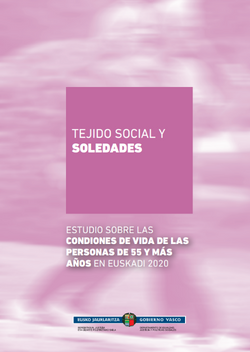Social network and loneliness. Study on the living conditions of people aged 55 and over in the Basque Country 2020

The general objective of the Basque Government's living conditions survey (LCS+55 2020) is to provide planners and those responsible for social policies with detailed and timely information on the family, individual and environmental living conditions in which the population aged 55 and over in the Basque Country lives. The survey also aims to gather information, systematise and disseminate the reality of the elderly in this territory, addressing a wide range of aspects that concern this population group.
The study carried out during 2020 is the third edition of this survey, which not only allows us to know the reality of these people, but also to analyse the trends and needs for the future. The generation of this knowledge will help both the evaluation and the design of past and future public policies on ageing in the Basque Country.
The results of this study are a series of thematic reports which analyse in detail the current situation and the evolution of people aged 55 and over in the Basque Country in areas ranging from the social fabric, health, care and participation.
The aim of this report in particular is to analyse the social fabric and the loneliness of people aged 55 and over living in the Basque Country, and specifically:
- To offer an updated picture of the social fabric and the loneliness of the elderly in the Basque Country (forms of cohabitation, contact with other people in and out of the home, proximity, residential loneliness, objective loneliness and subjective loneliness).
- To identify the profiles of elderly people for each of the variables analysed.
- To undertake a comparative analysis of trends and evolution of these aspects since 2010.
Professionals
Other Professionals
- Mª Ángeles Molina


